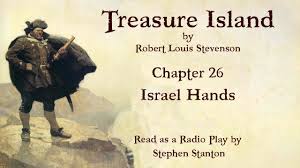Christopher Columbus discovered the Caribbean Islands in
1492, the same year that the kingdom of Castille finally drove off the invading
Moors, people from North Africa who had been trying to invade Europe by coming
through Spain for nearly 300 years. In only a few years, Castille united with
Aragon only a few years later, creating the modern nation of Spain.
Upon learning of a new land, where the only metal seemed to
be gold, and emeralds came the size of eggs, the Castilian Queen – Isabella -
immediately thought that it should be conquered. This was pretty standard
practice for the time. European nations fought each other and took over new
territory all the time. It was the Medieval way of life. and because of the
ongoing war, Spain was still solidly Medieval in their way of thinking and
governing.
Spain wanted to set up a governmental system just like the
one they had at home. It's very likely that at first the rulers had no idea how
much territory they were dealing with. No one had ever tried to govern a
territory more than 83 times the size of the homeland – and more than 3000
miles away.
Queen Isabella's original grant to Columbus made him
"Admiral of the Ocean Sea," and ruler of all the lands he discovered.
When Isabella realized that Columbus how much Columbus had discovered, she
revised her decree and the Crown began governing the New World.
 |
| Queen Isabells |
But by the middle of the 1500’s, the Spanish government
began to get a firm grip on the New World. The conquistadores had been supposed
to carve out medieval-style baronies for themselves. The “serfs” in these territories
would farm and serve as unskilled foot soldiers when called upon.
This didn’t work out. The natives had no understanding of their
expected roles in this society, and besides, they died in droves from European
diseases. The remaining ones found it relatively easy to flee into the jungles
when pressed. Spain needed to send colonists, and so they did. Many of these people
died from New World diseases, but by only 1500, nearly 1000 Spanish lived in
the Americas.
Spain's American empire was divided into viceroyalties.
These appointed men were literally vice-roy’s, or under-kings. Deriving
authority from a belief system that claimed that the king was appointed
directly by God, and ruled by divine will.
Within a viceroyalty was the captaincies-general. The
captain-general operated much like a junior viceroy, usually governing a region
distant from the viceregal capital, such as Chile and Guatemala.
The oidores (judges)
were the most important officials. They were important people in Spain with
legal training. And people of great consequence and who received high salaries
in the colonies. In some instances, the power of the judges overlapped those of
the viceroy. It is believed that this was intentional, since it required the
power of the actual king to mediate.
The audiencia was legal a court, which was
its chief function. As time went by and population grew, it divided into
special courts and added a number of oidores.
It could question the actions of other officials and discipline them. It could
execute laws. When it was in a viceregal city, the viceroy was automatically
its president but there was always tension between the audiencia and the viceroy no matter where the audiencia sat.
The viceroys and governed through a Council of the Indies in
Spain. The Council of the Indies was formally created on August 1, 1524. The
king was informed weekly, and sometimes daily, of decisions reached by the
Council. which came to exercise supreme authority over the Indies at the local
level. Civil suits of sufficient importance could be appealed from an audiencia in the New World to the
Council, functioning as a court of last resort.
So, a plan existed. When the system did not work, the Crown made
efforts to make it work. At various times additional viceroys were assigned.
The governing council was overhauled in 1524, and new laws were written. The
intention was to create a civil, effective government.
But civil government is hard to maintain when huge amounts
of gold, silver, and jewels are floating about. The remnants of the medieval
system meant that no middle class was envisioned. The folk who mined the riches
were not the ones who profited by them – except when the riches went missing,
or “shrank” to use the modern euphemism for theft.























